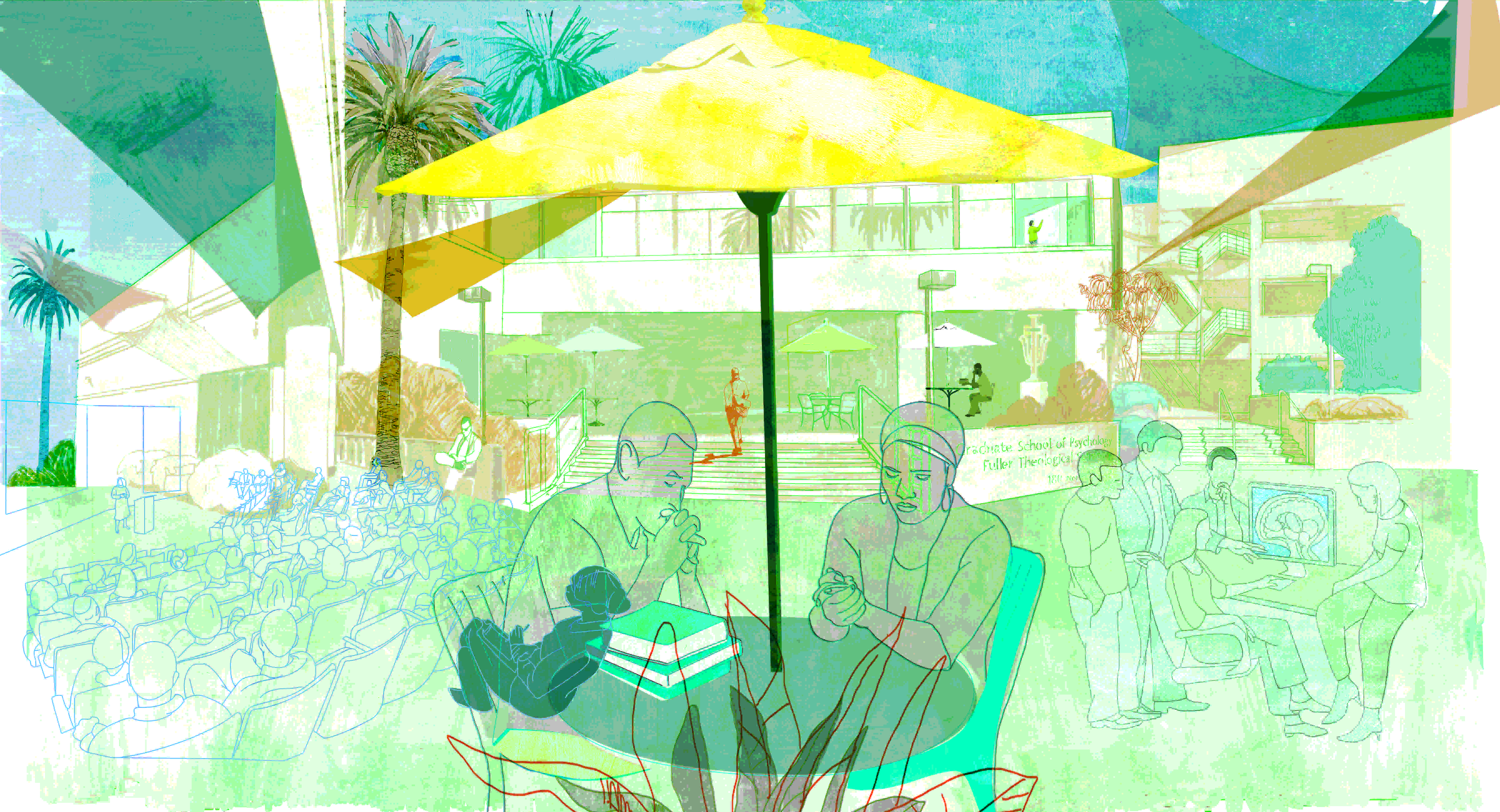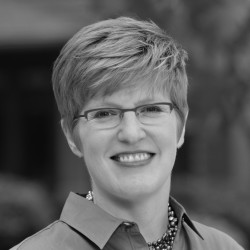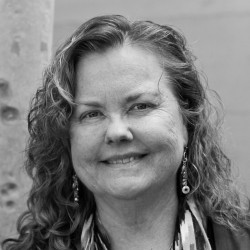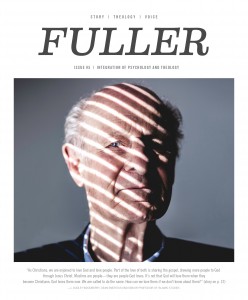
Let’s start with a question. Before you begin reading this article, take a minute to stop and reflect. In your work and ministry, what is it that you seek for those you are serving? What is the healing or wholeness that you desire for the people to whom you minister? Write those thoughts down.
Now, consider that list for yourself. How does your life reflect that place of wholeness or healing? God desires that you also live in a way that is connected intimately with the knowledge of who you were created to be, that you know how much God loves you, and that you are transformed and healed: God wants you to have a ministry plan that can sustain you. Is that the plan you follow?
WHOLENESS AND BROKENNESS
Ministry with shalom at its center is a mutually transforming ministry. As we pursue a life of service that seeks to live out shalom for others, God seeks to transform us so that we live in dynamic relationship with our self, God, our loved ones, and our community. Our participation in ministry is then a reciprocal involvement in redemption and restoration; we are restored as we participate in the restoration of others.
Yet how often does the work of ministry, health care, or psychotherapy lead to the experience of exhaustion, disillusionment, or despair? It is not uncommon to hear colleagues say that they are “burned out.” Is this what you desire for the people you are serving? Is your goal for them to be so invested in their work and ministry that they do not have time to pause and rest? How can this be what God desires for you?
In this article we will explore the association between burnout and shalom, and the ways that human relationship to God, self, others, and community are interwoven in these experiences of wholeness and brokenness. We assert that it is within the transformative power of relationship that we move toward shalom, and when we break down in our authentic connection to God, self, and others we are prone to burnout. In fact, we do violence to others and ourselves, and we violate God’s plan for shalom when we do not value the authentic needs of self and of others.1
“If we were to take Jesus more seriously, we would take the body of Christ more seriously. We need to learn it is in the body of Christ that we are formed, and that character formation shapes the way in which we are therapists, researchers, and educators. . . . It is such a temptation professionally to move beyond the provincial church into the rarified air of our own professionalism. While I believe strongly in our responsibility to society and immersing ourselves in its brokenness, I think we have a profound responsibility as followers of Christ to take care of the body of Christ.”
+ ALVIN DUECK is the Distinguished Professor of Cultural Psychologies in the School of Psychology. This quote is taken from a Fuller panel convened for the School of Psychology’s 50th anniversary.
WHAT DOES PSYCHOLOGY SAY ABOUT BURNOUT?
There are many reasons to embark on thoughtful, quality integration of psychological science and intercultural and theological reflection. However, one pressing reason may be that the use of psychological research on burnout in conversation with ministry settings may help us protect a whole generation of ministry leaders from an orientation that violates shalom. Social psychologist Christina Maslach, in her early research and writing on burnout, emphasized that “what is unique about burnout is that the stress arises from the social interaction between helper and recipient.”2 Burnout is relational; it is in the context of relationships that the stress develops. By connecting with others in need and experiencing the emotional burden of another’s pain and suffering, the caregiver is required to give of herself emotionally to create an opportunity for healing—for shalom. The experience of burnout is also relational as it is connected to one’s sense of relationship to self, which is influenced by one’s relationships with colleagues and leaders within the ministry or care setting. This primary relational context joins our understanding of ministry burnout to the concept of shalom.
Maslach’s theory includes three components of burnout: “emotional exhaustion, depersonalization, and reduced personal accomplishment.”3 The theory suggests an interactive relationship between these three components. The emotional demands of serving people in healing or helping roles can cause workers to extend themselves beyond their capacities. Needs may feel urgent and ever-present, and the worker can begin to feel “used up,” that there is “nothing left” and no source for gaining energy for the work. When emotional exhaustion sets in, one possible way to try to conserve energy is to not extend oneself as much to the relationships. This can move the worker to a place of distancing from or depersonalizing those whom he/she is caring for. While a certain balanced amount of detachment may be a necessary boundary in emotionally charged work, a worker who is burning out becomes emotionally cold and unfeeling or cynical about the needs of the client. Finally, these experiences of distance and exhaustion can be exacerbated by a sense of limited personal accomplishment, and perhaps even self-recrimination that one has “failed” or “become like the other burned out workers.”4
The impact of burnout moves beyond these internal experiences of exhaustion and lack of accomplishment. Research suggests that burnout is associated with lower work productivity, lessened commitment or loyalty to an organization, more sick days, more stress-related illness, and finally, attrition.5 There is more than simply risk of personal misery when a health professional experiences burnout; it ripples outward and affects ministry, relationships, organizational culture, and morale.
Maslach and her colleagues have identified six specific areas within the work setting that contribute to the risk of developing burnout: “workload, community, values, personal control, reward, and fairness.”6 We will briefly describe these constructs and connect them with the overall framework of relationship. As might be expected, workload is a critical factor in burnout, particularly with respect to emotional exhaustion. When the work demand is beyond one’s capacity, and when there are not seasons of lessened work to allow for recovery, exhaustion can develop.7 Community is the general quality of relationships within the workplace or organization. Support from peers can increase one’s sense of accomplishment and effectiveness in work, while support from supervisors can buffer against exhaustion.
Personal control in work is exemplified in the ability to contribute to organizational decisions and having clarity and limited conflict in job roles; more control is associated with less burnout. While there may be limits to the ability to control outside circumstances or resources, the ability to participate in decisions and problem solving may help to buffer the impact of these limitations. The importance of reward is also associated with burnout—not only financial compensation, but also recognition for work accomplished. Fairness in the job setting is the perception that decisions are equitable, processes of decision-making are unbiased, and one’s efforts, time investment, and skills are justly acknowledged and compensated. In a longitudinal study, Maslach and Leiter found that for those already at risk of burnout, unfairness was a key predictor for them actually experiencing burnout a year later.8 Finally, we consider worker values. These ideals and principles bring people to a particular job, motivate them for their work, and set expectations for what they want to accomplish. When these personal values align with organizational values, burnout is less likely.9 This requires us to be able to reflect and identify what our personal values and motivations for ministry truly are.
RELATIONSHIPS AND BURNOUT
Because relational stress in work correlates to burnout, an important antidote against it is supportive work relationships. Humans turn to relationships when stressed, and social support as a psychological construct represents both the experience of being emotionally and practically supported ourselves and doing this for others.10
Psychological literature identifies four main sources of social support that mitigate burnout: professional, personal, organizational, and church-based. Professional support comes from supervisors, colleagues, and patients.11 Family and friends provide personal life social support.12 Organizations, through policy and other structures, institute supportive environments. Two examples of organizational support include predictable workloads and employee input in policy.13 Churches not only offer emotional support through clergy and members but also provide avenues of encouragement to maintain, deepen, and integrate faith with daily life.14
The presence of social support can both prevent and buffer against the effects of burnout, as “social support not only reduces the likelihood of strain, but social support is mobilized as a coping mechanism when strain does occur.”15 Research with samples of healthcare workers, first responders, psychologists, caregivers of patients with advanced cancer, and counseling center staff supports the conclusion that higher levels of burnout occur when there are low, insufficient, or dissatisfying levels of social support.16 In humanitarian aid workers, social support was significantly related to less emotional exhaustion and more personal accomplishment, and organizational support (indicated by a feeling of being supported by the agency, as well as the perception of supportive policies) correlated to lower levels of emotional exhaustion and depersonalization.17
“When we fail to acknowledge our interdependence . . . we fail to serve the purposes of God optimally. We may do so out of pride, believing our own efforts to be sufficient, or out of self-reliance, believing our own efforts should be sufficient, or out of shame, believing ourselves undeserving of assistance. But when we insist on acting independently, we can thwart the opportunities of others to contribute as God made them to contribute. These contributions from others can be complicated, frustrating, and wonderful, but even when more the former than the latter, interdependence enriches both the self and the other. God made us for relationship and community.”
+ MARI CLEMENTS, dean of the School of Psychology, in her 2014 Baccalaureate address
SHALOM AND BURNOUT
How can whole, shalom-oriented relationships contribute to a work or ministry model that can move past burnout into a sustainable ministry? Clearly shalom cannot be attained by addressing only one aspect of our lives or work but rather requires a dynamic understanding of our relationships. Realistically, even when we desire to embody a reciprocal transformative model of ministry, there may be seasons in which we are overextended. However, attending to the warning signs of these seasons of stress allows ministry workers to create time for continued refinement and transformation. Facing burnout remains an opportunity to grow in understanding more about ourselves as well as others. In order to more deeply explore this interaction, we begin with a model of human relationship.
Martin Buber offers a theological framework for humanness that reflects the relational image of God and the value of persons. In a simple way, his “I-Thou” understanding of personhood reflects the fact that we are a true self only within relationship; the self is known only in relation to another. The relationship with another—“I-Thou”—reflects the sacred space that is formed when we are in authentic relationship; Buber contrasted this with having an “experience” of a person, rather than authentic connection, represented as “I-It.”18 Balswick, King, and Reimer expound on Buber’s theological anthropology to present a model of relatedness with four quadrants, based on the framework of an x-axis that represents value of self (from low, insecure sense of self, “It,” to a high, secure sense of self, “I”) and a y-axis to identify the value of the other (from low recognition of the unique humanness of the other, “It,” to a high regard for the other, “Thou”).19 This model then identifies four quadrants or types of relations depending upon the location on the axes: I-Thou (upper right quadrant), I-It (lower right), It-Thou (upper left), and It-It (lower left).
The I-Thou relationship is then the best description of a whole and healthy relationship with self and with other. God’s intention is that we be fully ourselves and fully acknowledge the uniqueness of another in relationship. Shalom is based on an I-Thou model, a developing self that is secure in an understanding of her/his particular identity and value, in relation with Thou (an “other” with unique being and identity). Burnout as just described is represented in the quadrants where either the “I” or the “Thou” has become an “It.” When we live out of a place of limited self-awareness and self-identity, our own needs and values can become subsumed in the caring relationship, demonstrated, for example, when it feels impossible to say “no.” When we thus become exhausted by the emotional demands of those in need, the other may become an “It” in an effort for the “I” to survive. We may feel it is too much to relate to the unique value of each person in need and may disconnect from our ministry relationships.
We enact I-Thou or I-It relationships within our ministry cultures, so we must seek to reinforce the value of self and value of other within them. An organization that esteems its own workers (or its ministry identity) over recipients often lacks sensitivity to the unique needs of the community and cultural context; it also fails to embody mutuality and the reciprocal nature of all ministry. Organizational cultures that value the recipient over the worker oppress their own workers and impede their health and transformation. This is clearly not participation in God’s shalom.
IMPLEMENTING PRACTICES FOR SHALOM
How might Buber’s I-Thou model enrich our understanding of shalom? We consider the personal, social, and organizational impacts of this model. First, within the mutual transformation model of ministry, each self is of value; we must commit to the challenging work of authentically regarding both self (I) and other (Thou). Transformational ministry also recognizes the ongoing mutual healing of both the caregiver and the care-receiver. Finally, institutions bear responsibility for creating an organizational culture of shalom, places that encourage and reward relationships of mutual enrichment rather than burnout and oppression.
Personal Impact of the Absence of Shalom
A dynamic model of shalom reminds us that we are in the midst of transformation, and we each bear a personal responsibility to pursue well-being and spiritual maturity. We have already argued against the idea that burnout is merely a matter of personal weakness. Nonetheless, we do participate in our transformation. In this regard, Miner and colleagues have identified an “internalized orientation to ministry” that serves as a buffer to burnout in clergy.20 This emphasis on an internal sense of identity, role, and competence highlights the importance of a secure sense of ministry self—an “I” as ministry worker, not an “It.”
Having a secure ministry identity challenges the temptation to a messiah complex. A messiah complex springs from an overactive sense of agency in which we consider our role to be greater than it actually is. We are not truly connected to our own unique gifts and needs; in surprising ways we may be treating ourselves as an “It.” Of course, caregivers do not wake up in the morning and decide that today they will become the messiah to those for whom they care. Rather, this savior complex subtly (or not so subtly) enters in when caregivers find it difficult to let God be God and thus take on more than they intend. At this point we are not participating with God but rather have taken on God’s role as well as our own.21 When we are unable to stop or say no to the requests of others, we may be acting as rescuers rather than as coworkers with the one true Savior who redeems us for shalom. The messiah complex prevents us from realizing our own need for transformation, instead seeing transformation as something that needs to be accomplished “out there” and not “in here.”
The principle of Sabbath is one way to regain perspective on our identity and role in our work. Sabbath means not only resting but ceasing, including ceasing to try to be God. On the Sabbath, “we do nothing to create our own way. We abstain from work, from our incessant need to produce and accomplish. . . . The result is that we can let God be God in our lives.”22 When we remember who God is in our lives, we are reminded of our role and God’s role; we can refrain from the temptation to be God in the lives of those for whom we feel responsible.
Sabbath creates a time and space in which shalom relationships are lived out and marred relationships are made whole. The accurate “I” view of the self is deepened as we experience God in the keeping of the Sabbath and Sabbath rest. Exhaustion is not the mark of spirituality. Sabbath is not only about personal time with God, or a personal time of rest, but also the place in which social support can be encouraged. Sabbath is a communal event that is best and most fully shared with others. Once Sabbath thus alters our orientation, it is not so much an isolated day as an atmosphere, a climate in which we live all our days.23 Importantly, Sabbath offers a foretaste of what is to come, when all will live in shalom. Messianic Rabbi Stuart Dauermann writes, “In fact, the standard Jewish salutation at the end of conversations or letters during the week as the Sabbath approaches is ‘Shabbat shalom,’ wishing someone ‘Sabbath wellness/wholeness/ restoration as an anticipation of that Day when all is altogether shalom.’”24
Caring for ourselves and living out Sabbath rest in community impacts how able we are to truly care for our team, our family, and those we seek to serve. Through the ongoing transformation of a commitment to pursue shalom, we maintain an accurate sense of self.
Shalom in Organizations 
The call to shalom and healthy community relationships requires a countercultural perspective. Cultural values of progress and productivity directly threaten healthy relationships; Sabbath counteracts this. Health care or any ministry that rigidly follows managerial culture by primarily valuing numerical growth or monetary cost runs the risk of treating others as “It”—one more cancer patient, one more family in economic need. What happens when the cancer patient does not get better? What is felt when the economic needs become more complex? We are not advocating an unreal or idealistic perspective on the vast needs of ministry and healthcare settings, but we are asking for an organizational commitment to eschewing an orientation that considers progress or productivity the ultimate goal of service.
Organizational leaders seeking shalom recognize that viewing progress and productivity as their highest values will not create an organizational culture that supports workers’ choices for margin, rest, and restoration.25 In a shalom oriented organization, leaders model keeping the Sabbath; they encourage staff to take their vacation time. Leaders need to uphold a high view of the value of each worker as well as each person they serve while themselves exemplifying healthy “I-Thou” relationships. Mutual transformation can then occur at all levels of the agency.
CONCLUSION
We violate God’s plan for shalom when we do violence to ourselves and others through burnout. While this statement may seem extreme, we contend that the experience of burnout represents a violence of self-deception and expectations of others that extend beyond capacity for health. Let us commit to enacting a ministry culture that lives in shalom and creates mutual transformation in ministry.
+ Originally published in a slightly different form in Health, Healing, and Shalom: Frontiers and Challenges for Christian Health Missions, ed. Bryant L. Myers, Erin Dufault-Hunter, and Isaac B. Voss (Pasadena, CA: William Carey Library, 2015).
ENDNOTES
1. Bryant L. Myers, “Health, Healing, and Wholeness: Theological Reflections on Shalom and Salvation,” in Health, Healing, and Shalom: Frontiers and Challenges for Christian Health Missions, ed. Bryant L. Myers, Erin Dufault-Hunter, and Isaac B. Voss (Pasadena, CA: William Carey Library, 2015),
15. See also Bryant L. Myers, Walking with the Poor: Principles and Practices of Transformational Development, rev. and expanded ed. (Maryknoll, NY: Orbis, 2011), 172.
2. Christina Maslach, Burnout: The Cost of Caring (Englewood Cliffs, NJ: Prentice-Hall, 1982), 3; emphasis in the original.
3. Ibid., p. 3
4. Ibid., 3ff.; Christina Maslach, Wilmar B. Schaufeli, and Michael P. Leiter, “Job Burnout,” Annual Review of Psychology 52, no. 1 (2001): 399.
5. Maslach, Schaufeli, and Leiter, “Job Burnout,” 406.
6. Christina Maslach and Michael P. Leiter, “Early Predictors of Job Burnout and Engagement,” Journal of Applied Psychology 93 (2008): 500ff.
7. Ibid., 500.
8. Ibid., 500ff.
9. Ibid., 500.
10. Carolyn E. Cutrona and Daniel W. Russell, “The Provisions of Social Relationships and Adaptation to Stress,” in Advances in Personal Relationships, ed. W. H. Jones and D. Perlman, 1:37–67 (Greenwich, CT: JAI Press, 1987).
11. J. E. Prins, H. M. Hoekstra-Weebers, S. M. Gazendam- Donofrio, H. B. Van de Wiel, F. Sprangers, F. C. A. Jaspers, and F. M. Van der Heijden, “The Role of Social Support in Burnout among Dutch Medical Residents,” Psychology, Health & Medicine 12 (2007): 5, doi:10.1080/13548500600782214.
12. Randall R. Ross, Elizabeth A. Altmaier, and Daniel W. Russell, “Job Stress, Social Support, and Burnout among Counseling Center Staff,” Journal of Counseling Psychology 36 (1989): 466.
13. Kyle D. Killian, “Helping Till It Hurts? A Multimethod Study of Compassion Fatigue, Burnout, and Self-care in Clinicians Working with Trauma Survivors,” Traumatology 14, no. 2 (2008): 42.
14. Neal Krause, Christopher G. Ellison, Benjamin A. Shaw, John P. Marcum, and Jason D. Boardman, “Church-Based Social Support and Religious Coping,” Journal for the Scientific Study of Religion 40, no. 4 (2001): 642, doi:10.1111/0021- 8294.00082.
15. Jonathon B. Halbesleben, “Sources of Social Support and Burnout: A Meta-Analytic Test of the Conservation of Resources Model,” Journal of Applied Psychology 91, no. 5 (2006): 1140, doi:10.1037/0021-9010.91.5.1134.
16. G. Gustafsson, S. Eriksson, G. Strandberg, and A. Norberg, “Burnout and Perceptions of Conscience among Healthcare Personnel: A Pilot Study,” Nursing Ethics 17 (2010): 34, doi:10.1177/0969733009351950; Gabriele Prati and Luca Pietrantoni, “The Relation of Perceived and Received Social Support to Mental Health among First Responders: A Meta- Analytic Review,” Journal of Community Psychology 38 (2010): 411, doi:10.1002/jcop.20371; Barbara J. Daly, Sara Douglas, Amy Lipson, and Helen Foley, “Needs of Older Caregivers of Patients with Advanced Cancer,” Journal of the American Geriatric Society 57, Suppl. 2: S293–95 (2009): 294; Ross, Altmaier, and Russell, “Job Stress, Social Support,” 469.
17. Cynthia B. Eriksson, Jeff P. Bjorck, Linnea C. Larson Sherry M. Walling, Gary A. Trice, John Fawcett, Alexis D. Abernethy, and David W. Foy, “Social Support, Organisational Support, and Religious Support in Relation to Burnout in Expatriate Humanitarian Aid Workers,” Mental Health, Religion & Culture 12, no. 7 (2009): 675ff.
18. Martin Buber, I and Thou: A New Translation, with a Prologue and Notes by Walter Kaufmann (New York: Charles Scribner’s Sons, 1970), 53ff.
19. Jack O. Balswick, Pamela Ebstyne King, and Kevin S. Reimer, The Reciprocating Self: Human Development in Theological Perspective (Downers Grove, IL: InterVarsity Press, 2005), 41ff.
20. Maureen H. Miner, Martin Dowson, and Sam Sterland, “Ministry Orientation and Ministry Outcomes: Evaluation of a New Multidimensional Model of Clergy Burnout and Job Satisfaction,” Journal of Occupational and Organizational Psychology 83 (2010): 169, doi:10.1348/096317909X414214.
21. Jude Tiersma, “What Does It Mean to Be Incarnational When We Are Not the Messiah?” in God So Loves the City: Seeking a Theology for Urban Mission, ed. Charles Van Engen and Jude Tiersma (Eugene, OR: Wipf & Stock, 2009), 15.
22. Marva Dawn, Keeping the Sabbath Wholly: Ceasing, Resting, Embracing, Feasting (Grand Rapids: Eerdmans, 1989), 29.
23. Abraham Heschel, The Sabbath (New York: Farrar, Straus & Giroux, 1951), 21.
24. Personal communication with Rabbi Stuart Dauermann, August 14, 2012.
25. Richard A. Swenson, Margin: Restoring Emotional, Physical, Financial, and Time Reserves to Overloaded Lives, rev. ed. (Colorado Springs: NavPress, 2004), 39.
+ Cynthia Eriksson, associate professor of psychology, Justin Barrett, professor of psychology, and Brad Strawn, Evelyn and Frank Freed Professor of the Integration of Psychology and Theology, reflect on the intersections of relationships and burnout in ministry. This project was made possible through the support of a grant from the Templeton Foundation. The opinions expressed in this video are those of the speaker(s) and do not necessarily reflect the views of the John Templeton Foundation.




